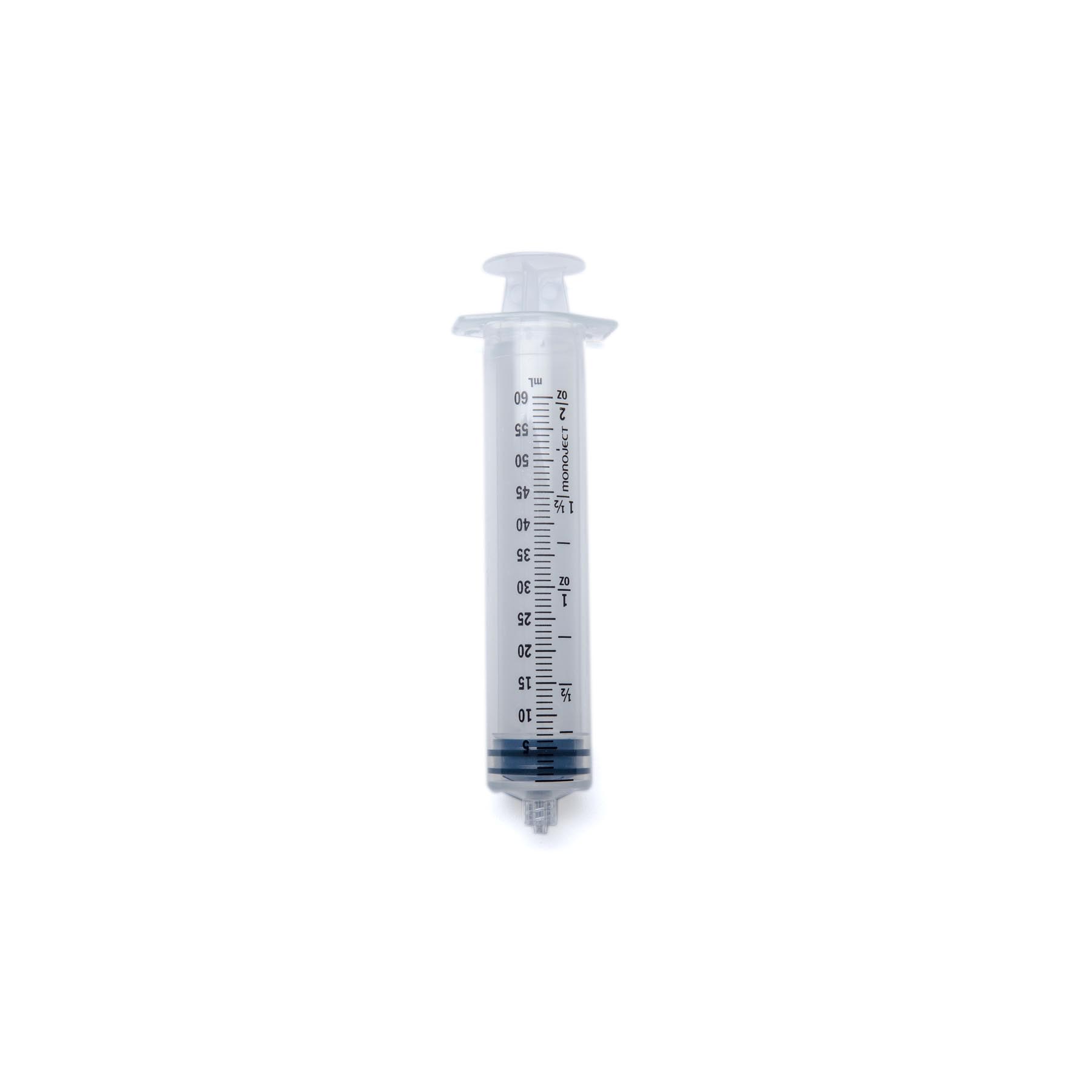Monoject 60mL Luer Lock Syringe
60mL Luer Lock Syringe, without needle. Bold, dual graduations (60 mL in 5-mL increments and 2 oz. in 1/4-oz. increments). Latex-free, Luer lock tip, 60 mL.
The uses for a 6mL luer Lock syringe are many but for the purposes of our bowel dysfunction program they are but one. These syringes work with our balloon catheters for the purpose of measuring and filling the balloons for sensation and expulsion training.
The following is an abstract from NCBI for the Technique of Functional and Motility Test: How to Perform Biofeedback for Constipation and Fecal Incontinence. To read the entire protocol, click on the link below the abstract.
Biofeedback therapy is an instrument-based learning process centered on operant conditioning. The goal of biofeedback therapy in defecatory disorders is to strengthen the pelvic floor muscles, retrain rectal sensation and coordinate pelvic floor muscles during evacuation. Biofeedback therapy, in a broader sense, includes education, counseling, and diaphragmatic muscle training as well as exercise, sensory, and coordination training. For dyssynergic defecation, biofeedback therapy is a well-known and useful treatment option that had response rates of approximately 70-80% in randomized controlled trials. Biofeedback therapy for dyssynergic defecation consists of improving the abdominal push effort together with biofeedback technique-guided pelvic floor relaxation followed by simulated defecation and/or sensory training. For fecal incontinence, the results of a randomized controlled trial, which had a response rate of 76%, indicated that biofeedback therapy is useful in selected patients who fail to respond to conservative treatment and that training to enhance rectal discrimination of sensation may be helpful in reducing fecal incontinence. The focus of biofeedback therapy for fecal incontinence is on exercising external sphincter contractions under instant feedback, either alone or synchronously with rectal distension and/or sensory training. Biofeedback therapy is a safe treatment that may produce durable improvement beyond the active treatment period; however, a well-designed study to establish a standard protocol for biofeedback therapy is needed. This review discusses the technique of biofeedback therapy to achieve the goal and clinical outcomes for constipation and fecal incontinence.
| Weight | .07 lbs |
|---|---|
| Dimensions | 7 × 2.25 × 1.5 in |

